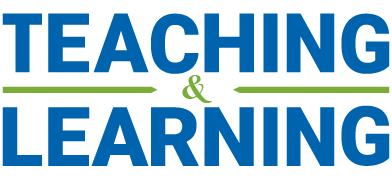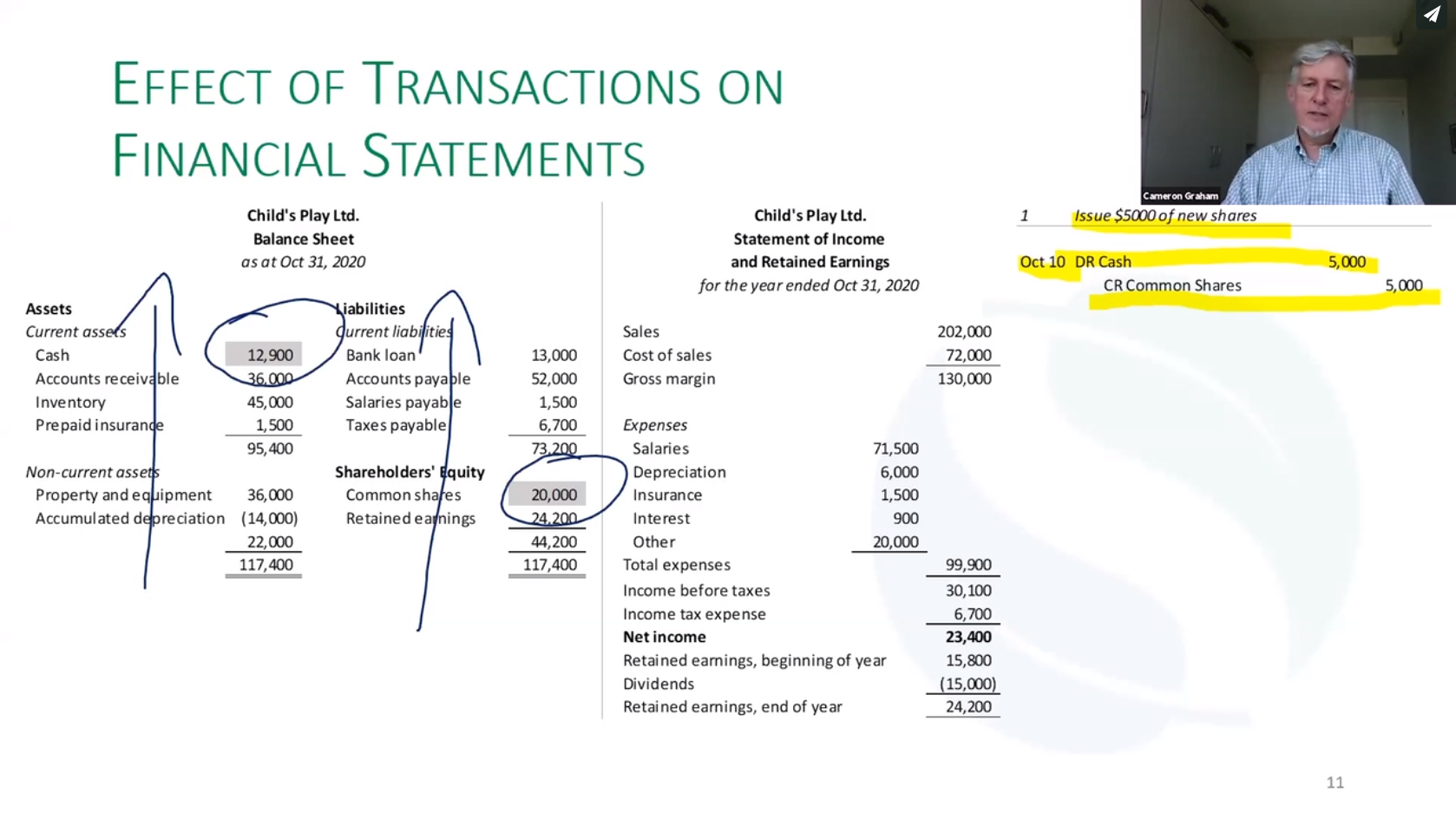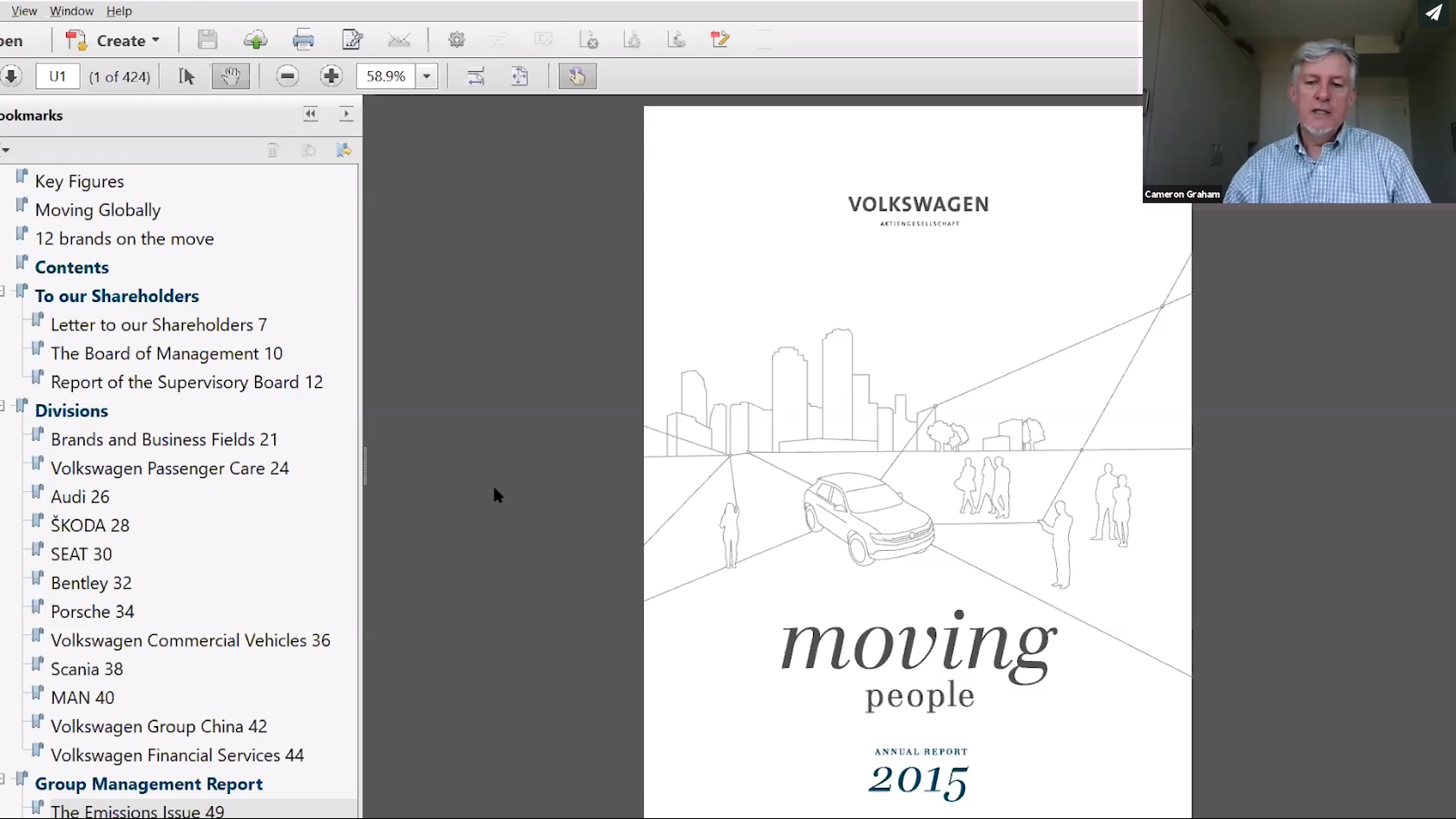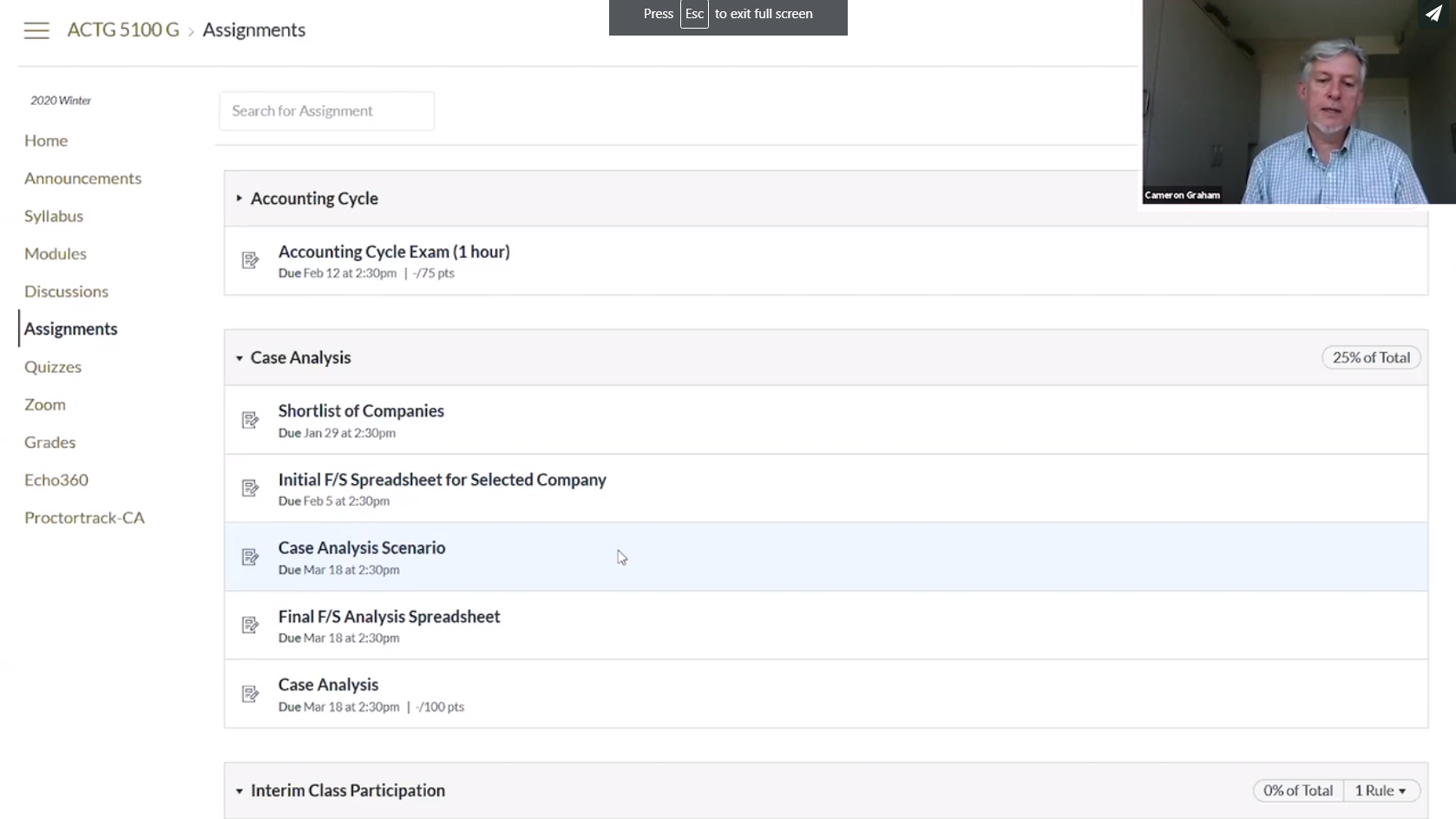Summary
Professor Cameron Graham provides a walkthrough of the remote course experience in ACTG 5100 Financial Accounting for Managers. Cameron navigates through the course from the student’s perspective, highlighting synchronous and asynchronous activities, interactive course elements, and opportunities for community building throughout.
Video Transcript
My name is Cameron Graham, professor of Accounting. I teach Accounting 5100, an introductory financial accounting course in the MBA program. Today I want to give you, a view of what this course looks like when taken with remote learning. When you can’t come to the classroom to meet with me, you need to know that this course is designed to help you be fully engaged in the class and to get the most out of it. So let’s just have a look at what it looks like from the student’s perspective.
We begin to see some of the modules, so week 1, week 2, and so forth. Let’s look at week 2. This module gives you an overview of what a typical week would look like. So the first part of the preparation is to download these PowerPoint presentations and watch them. These are narrated by me and you can pause them, you can review them, you can take notes for yourself, and it gives you my perspective on the textbook content for that week. It gives you just a little bit of a twist on things, and helps you begin to develop your critical perspective on this accounting information. So that part of the preparation lasts about an hour or so. The second part of the preparation for the class is to go through the textbook. And together, the PowerPoint presentation and the textbook material combine to give you a really good grasp on the basics of accounting.
The third step for preparing for class is to do practice problems. That allows you to test yourself to make sure that you’re coming to class with a good grasp of the basics. The fourth part then, is the discussion forums. If I go into the discussion forum here for week 2, you’ll see that students have posted some questions that they have gone over. They may have been from the textbook, or they may have been from the PowerPoint presentation. They may have been from something else that they’ve read online. And then other students would respond. Now in this case I helped respond to the class but you can see that other students have also responded several times. And together everybody begins to help each other understand the textbook material from the point of view of the kinds of questions that came up as you were working through.
So that’s the preparation part of the class. And then there is a chance for us to come together on a scheduled basis, to work together synchronously. So that would be the time that you get together with me and the rest of your classmates and we work through stuff together. Now there is two parts to that. One is completely optional. It is just a practice session that I put on each week for students to go through some more practical problems if they felt the ones they were going through in the textbook weren’t making sense to them. But the regular class time that we would get together then, for everybody to meet together, is around something that is completely different from going through the textbook. That’s where we get together and look at an integrative case.
So with week two as we saw before, we are looking at the Volkswagen financial statements from the year 2015. If you download that and open it, this is what it looks like. 2015 was the year that Volkswagen felt the full impact of the Diesel emissions scandal. We look at this, but we also look at the balance sheet, the income statement, the cash flow statement, notes from the financial statements. And we look at this together to discuss how a company responds to an event like that and shows the impact that it has on their finances. And then what I do is I divide the class up into small groups of about five or six students, no bigger than that, and I give you clear tasks to work on and the point is that you then get to work in much smaller groups together and talk to each other about the material and search through the material that you’ve downloaded. So based on the tasks you were given, you would be working through the cash flow statement, another group might be working on the balance sheet and so forth, and you can work on it together in your small group to develop new insights that you will then bring back to the rest of the class.
So that is the kind of case that we would work on together. It might be on Volkswagen, it might be about Apple, it might be about a smaller company that you’ve never heard of, or even a non-profit organization. But each of those cases when we get together is an opportunity for you to wrestle with accounting information and begin to make sense of it with your classmates.
So that’s what the class time looks like. As you can see, each week there is about six hours of prep and then about an hour and a half to meet together as a class. And all of that takes somewhere around 7.5 – 8 hours to do. And then the rest of the time is allocated for you to save up for the times that the assignments are due. So let’s go look at what those assignments are like.
So this is the assignments tab on Canvas. You can see I’ve got a number of components here. In this class, 25% of your mark is based on the ‘Accounting Cycle’ exam to make sure everybody early in the course has got a really solid grasp of the fundamentals of how accounting is done so that the rest of class we can begin to build on that together. The second grade component is the ‘Case Analysis’ assignment due later in the course around week 10. It involves each student selecting a company early in the course and beginning to work through their financial statements and develop a really strong understanding of that particular company. I post a ‘Case Analysis Scenario’ where I put you in a particular setting. You might be asked to pretend that you are the CFO of the company, or you might be asked to pretend you are a banker looking to possibly give a loan to the company, or you might be in the position of a competitor looking at the capacity of this company to succeed in the marketplace. All of these are potential scenarios you could be given and you would adapt those to the particular company you’ve been given and you can respond to that scenario from that perspective. So everybody is doing a different company, but everyone is responding to the same scenario. And this is another way in which you are able to adapt the course to the kinds of things that you really like to grow in. If you’re really interested in mining, or supply chain management, you can pick a company that is involved in one of those industries, for example.
The third component of your grade is class participation, based on the best three of the first four components here. So there’s the discussions on Canvas, there’s the quizzes that you do in the textbook, there’s your participation in the classroom, and there’s a little reflexive self-assessment essay that you would write where you get to talk about what it is that you’ve learned in this course, and to try to tie this course to your career aspirations. The last component here, there is no grade for. It is a classmate accommodation, and it is just a way to let me know about the work other students have done to support you.
The last part of the course is the final exam. The final exam is worth 40% of your grade. It covers the whole course. It pulls together some technical questions, some interpretive questions, and it really pushes you to make sense of everything and how all the pieces fit together.
So a course like this really depends, for success, on your sense of being connected to your fellow classmates. So how do we make sure that happens? Some of the pieces you’ve already seen. You’ve got the chance to interact in the classroom, you’ve got the chance to participate in the discussion forums, you’ve got chances to meet with me to go over practical problems, you’ve got all the different ways of participating in the class time, like the chat window and so forth. It’s a really interactive course that really requires that you get to know students. So all of this is designed to help you feel connected to the class, to your classmates, but there’s also a chance for you to meet with me, if you need to, one-on-one. You can connect with me through Zoom, stay in touch with me, and making sure you’re looked after.
So that’s what accounting 5100 looks like when you take it from me. It’s a course that relies on a lot of preparation for each week, and a shorter class time as a result. It’s a course that’s designed to help you adapt your experience in the course to the way that you learn, and it’s a course that really asks you to listen to other students and help them learn, and collaborate together to develop your knowledge of financial accounting. Every other course that you take at Schulich will be slightly different as each instructor has a slightly different approach, but in general the more preparation you put in for the class, the better prepared you’re going to be, and the more you’re going to get out of that class. I look forward to having you in the class. I hope I have a chance to teach you. I hope I have the chance to learn from you.
Learn More
- Online Course Walkthrough: MBAN 5140 with Instructor David Elsner
- Online Course Walkthrough: MKTG 5200 with Instructor Ashley Konson
- Schulich Master of Accounting (MAcc)
- ACTG 5100 Financial Accounting for Managers Course Description
- Schulich Educational Technology
- Schulich Innovative Courses and Instructors






